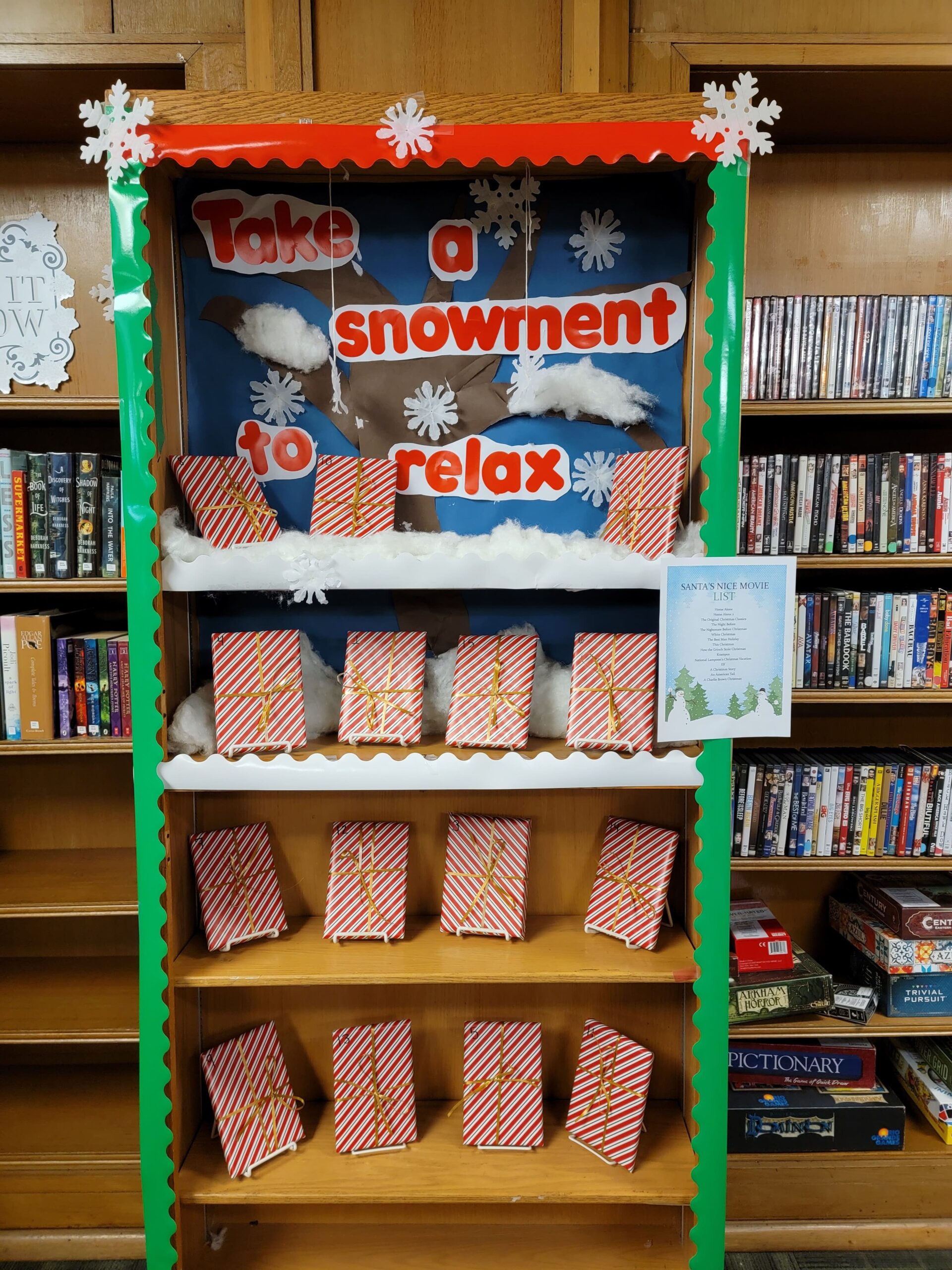Getting Involved
Find ways to contribute to the library as an employee, graduate student, or volunteer.
Involvement Opportunity Suggestions

Design a Display
Creating a display is a great way to showcase the libraries collections, encourage library checkouts, and even promote inclusivity and diversity in our collections!
Propose a display theme and item list, design signage and request materials, and create a display for patrons and library employees to enjoy!

Plan a Program
Creating a program or event is a great way to generate community engagement and get students involved with the libraries.
Have an idea for the libraries that you want to see happen? Programs and events are a great way to organize the community. Whether they be for destressing, education, or hobbies, they’re a great way to participate in the library.

Create a Workshop
Have something you want to teach? Create a workshop and invite your peers in person or over zoom to attend your interactive lecture.
Educational programs, career building, or even exploring a hobby. Workshops are a great way to start teaching AND to start learning!

Plan an Exhibition
Exploring the archives, special collections, or your own bookshelf: designing an exhibition is an art form for everyone.
Exhibitions, once daunting, are an amazing way to design and extrapolate on your passions, interests, and history. Whether you are interested in ancient manuscripts or the renderings of notable costume designers, exhibitions are one part lesson plan and one part art gallery.

Work in the Archives
Want to explore the past? The archives are a great way to delve into records keeping, history, and culture.
University archives are an intrinsically familiar way to explore ourselves and the community we are a part of. Foldering, preservation, digitization, or even just creating posts in social media; the archives are an exploratory tool into ourselves.

Maintain the Catalog
Creating and maintaining records are a great way to introduce yourself to the functionalities of libraries, archives, museums, and galleries.
Working with metadata provides a way to explore, extrapolate, and improve upon the systems that make libraries equitable and accessible.

Shadow a Librarian
Work alongside a librarian as an assistant or mentee and learn about libraries.
It is easy to feel left in the dark and ironically, shadowing is a great way to find the light. Working alongside professionals during their day-to-day can provide invaluable experience and perspective on what it is like to be a librarian.

Accessibility/
Inclusivity Proposals
See something that needs to change and want to help initiate it? Libraries are supposed to be welcoming and accesible for all, and it is up to us to make those changes.
Propose an accessibility or inclusivity policy, program, or update to the facilities. Explore what makes the physical and digital spaces of libraries equitable and how we can improve our institutions facilities.
Building a Library Display By following these steps, you can create engaging and attractive library displays that capture patrons’ interest and encourage them to explore new materials.Step-by-Step Guide for Creating Library Displays
1. Planning the Display
2. Selecting Materials
3. Gathering Supplies
4. Designing the Layout
5. Setting Up the Display
6. Final Touches
7. Promoting the Display
8. Maintaining the Display
9. Evaluating the Display
10. Dismantling the Display






Planning a Program By following these steps, college students can successfully plan and execute a library program that engages the community and fosters a love of reading and discussion.Step-by-Step Guide for College Students Planning a Library Program
1. Getting Started
2. Creating a Plan
3. Recruiting and Preparing
4. Implementing the Program
5. Promotion
6. Evaluation and Follow-Up
Planning a Workshop By following these detailed steps, you can ensure a well-organized, engaging, and successful library workshop that meets the needs and interests of your community.Step-by-Step Guide for Planning and Hosting a Library Workshop
1. Identify Workshop Goals
2. Know Your Audience
3. Select a Relevant Topic
4. Set a Date and Time
5. Determine Duration
6. Prepare a Budget
7. Seek Funding
8. Select and Book a Venue
9. Engage Speakers and Facilitators
10. Develop Workshop Materials
11. Promote the Workshop
12. Arrange the Venue
13. Facilitate the Workshop
14. Collect Feedback
15. Follow-Up
16. Document and Reflect
Everything to Know About Exhibitions This guide integrates best practices for planning and organizing exhibitions, ensuring a comprehensive approach to creating engaging and educational library displays.Step-by-Step Guide for Creating a Library Exhibition
1. Planning the Exhibition
2. Forming a Team
3. Creating a Project Plan
4. Budgeting
5. Selecting Materials
6. Research and Documentation
7. Designing the Layout
8. Securing and Handling Items
9. Setting Up the Exhibition
10. Creating and Placing Signage
11. Marketing and Promotion
12. Hosting an Opening Event
13. Maintaining the Exhibition
14. Gathering Feedback
15. Evaluating the Exhibition
16. Dismantling the Exhibition
Tips for a Successful Exhibition
Community Involvement Suggestions for Students
Beginners Guide to Local Involvement and Opportunities This guide is designed for students in a collegiate-level Pratt MLIS program and undergraduates interested in gaining experience in art galleries, museums, and libraries. The guide will help you get involved, gain valuable experience, and get your foot in the door in these cultural institutions. Gaining experience through volunteering, practicums, and internships in art galleries, museums, and libraries in New York City can be an enriching and career-advancing endeavor. By following this comprehensive guide, students can effectively find, apply for, and make the most of these opportunities, setting a solid foundation for their professional futures.Comprehensive Guide for Volunteering, Practicums, and Internships in Art Galleries, Museums, and Libraries in New York City
Introduction
Section 1: Understanding the Opportunities
1.1 Types of Opportunities
1.2 Benefits of Each Opportunity
Section 2: Finding Opportunities
2.1 Where to Look
2.2 Creating a List of Potential Opportunities
Section 3: Applying for Opportunities
3.1 Preparing Your Application
3.2 Application Process
Section 4: Preparing for Interviews
4.1 Interview Preparation
4.2 During the Interview
Section 5: Making the Most of Your Experience
5.1 Onboarding
5.2 Building Relationships
5.3 Professional Development
Section 6: Leveraging Your Experience
6.1 Documenting Your Experience
6.2 Seeking Future Opportunities
Section 7: Tips for Success
7.1 Tips for Applying
7.2 Tips for Gaining Experience
7.3 Tips for Networking
Conclusion